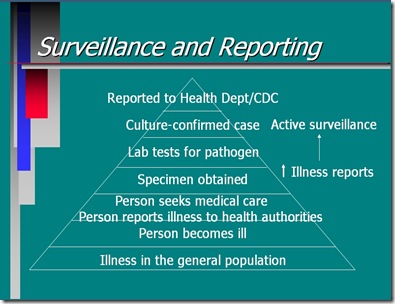
The H5N1 Roller Coaster
# 9435
Although it is still early in our winter `bird flu season’, the early indicators suggest a busy few months ahead, with H7N9 expected to return to China, H5N1 rising again in Egypt, and prospects for seeing outbreaks in Vietnam, Cambodia, Indonesia, and other bird flu endemic regions.
Avian influenza reports generally begin to climb in November – peak in March or April – and usually decline by May or early June.
Until a couple of years ago, we really only had one bird flu virus to worry about; H5N1. In 2013 it was joined by a worthy competitor – a newly emerged H7N9 virus. Last year, we added several new reassortant viruses to our watch list, including the H10N8 virus, H5N6, and H5N8 (in poultry).
It is not inconceivable that additional viruses will emerge in the coming months, or that one of the upstart viruses from last year will gain traction, but for now H7N9 and H5N1 are two avian flu viruses of greatest concern.
As bird flu season corresponds to seasonal `cold & flu’ season, we tend to see a lot of `suspect’ cases (in endemic countries) tested – but most will end up having something less exotic – such as influenza, pneumonia, or even dengue or malaria.
Viral diseases almost all start out with similar symptoms, and so we see a lot of `false alarms’. This year with enhanced surveillance around the world for MERS, Ebola, and avian flu – we are apt to see more suspect cases than usual.
Right now in Egypt, there are probably a half dozen reports each day of suspected H5N1 infections, but over the last month only a dozen have been announced as being positive for the virus. A few years ago it was announced that Egypt had tested more than 10,000 `suspect cases’, and of those fewer than 100 were positive for the virus.
Which is why I don’t tend to blog `suspect’ cases. Unless there is something unusual about a report, I wait for something more solid to report. Otherwise I’m constantly having to post ` X tested negative’ follow up reports.
You can, however, keep track of cases being tested by checking in with FluTrackers, where their newshounds do a terrific job of monitoring press reports from around the world.
You’ll find similar reporting by the newshounds on The Flu Wiki, and of course Crof over at Crofsblog does a phenomenal job tracking multiple news threads. For scientific analysis – and the latest charts on avian flu, Ebola, and MERS – you’ll want to visit Dr. Ian Mackay’s VDU blog as well.
You’ll find links to additional sources of information in my sidebar.
Since many official sources – such as Ministries of Health or Agriculture – are slow (or sometimes simply reluctant) to post updates, we find ourselves relying on media sources for information. While they can often yield valuable information, they can also be hyperbolic (and sometimes wildly inaccurate) in their reporting.
Add in the ambiguities of syntax-challenged machine translations of the original Arabic or Chinese text, and Caveat lector becomes the order of the day.
While a lot of my readers have taken this rollercoaster ride before, and already know what to expect, I know a lot of visitors haven’t. Things may get hectic – particularly in the first quarter of next year. We may be following multiple outbreaks – in multiple countries – of multiple disease threats.
This year, in addition to several flavors of avian flu to keep track of, we’ve got a `drifted H3N2 seasonal flu’, a likely return of MERS in the Middle East, and Ebola still burning away in West Africa.
While these reports may be coming in fast and furious, from a global health perspective, the important thing is how these diseases are spreading. As long as avian flu or MERS isn’t spreading efficiently from human-to-human, its impact – no matter how dramatic or insistent the media coverage – is likely to be low.
And while we keep track of individual case counts, we also know they only represent some portion of the cases out there. Even in developed nations, the number of people reported to have been infected by a disease is almost always an undercount.
In countries where surveillance, testing, and reporting are limited, the case counts only serve as a rough guide as to the size of any outbreak.
In short, one shouldn’t get too hung up over the exact numbers. Whatever has been reported is invariably wrong. As is often heard in Flublogia – whatever the official count – you can `probably add a zero to it’.
While it is difficult to forecast what kind of winter season we are apt to see, I admit I keep hearing Bette Davis’s famous quote (as Margo Channing in All About Eve) in my head.
“Fasten your seatbelts. It’s going to be a bumpy night.”
